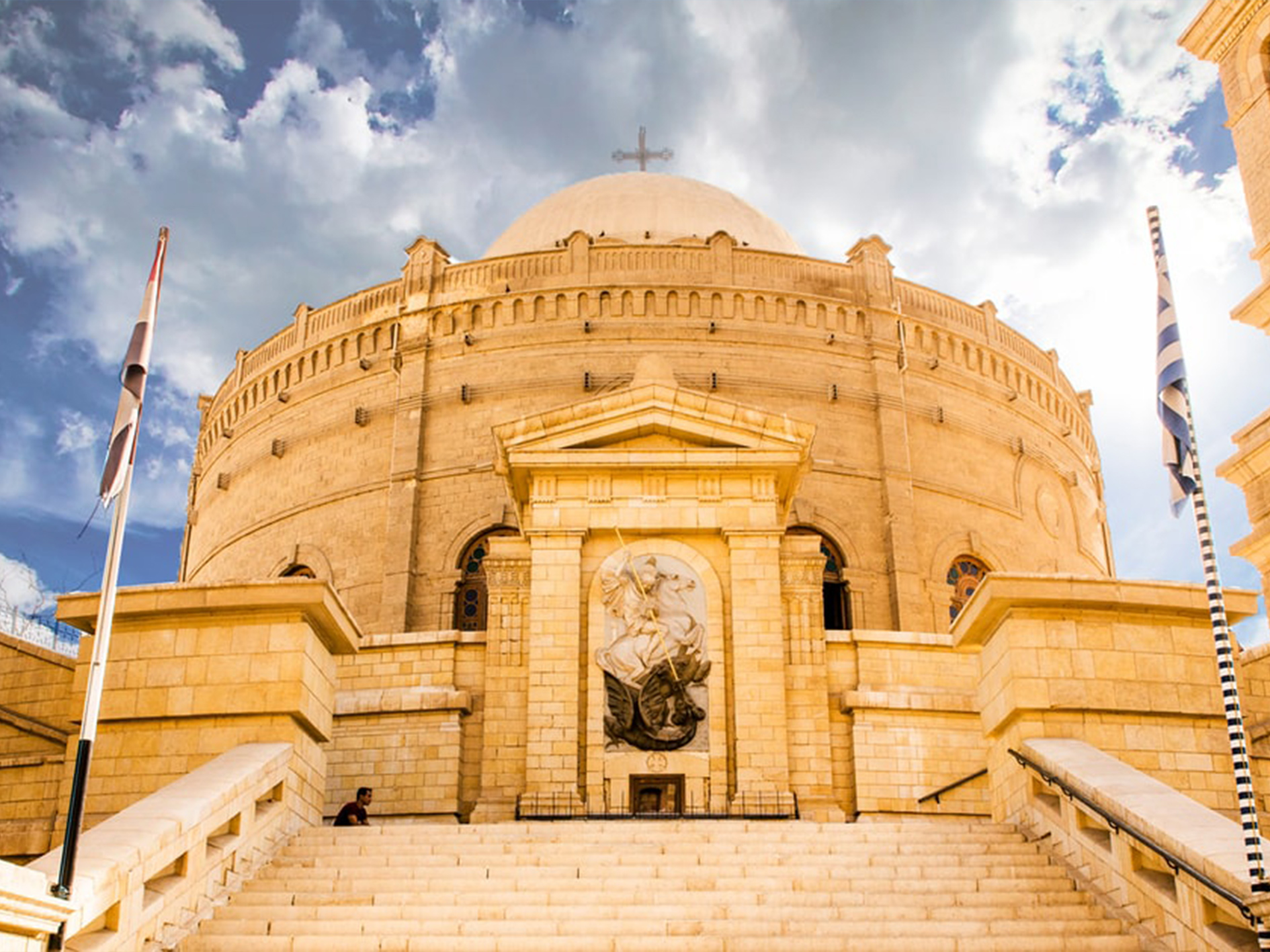
The Evolution of Egyptian Architecture: From Ancient to Modern
The Evolution of Egyptian Architecture: From Ancient to Modern
Introduction: A Timeless Architectural Journey
Egypt is a land synonymous with awe-inspiring architectural marvels. From the grandeur of ancient pyramids to modern urban designs, Egyptian architecture is a testament to the country’s rich history and evolving culture. This article delves into the fascinating evolution of Egyptian architecture, exploring its ancient roots, medieval influences, and contemporary innovations. Along the way, we’ll highlight how Alibaba Excursions Hurghada can make your journey through these architectural wonders truly unforgettable.
Ancient Egyptian Architecture: Building for Eternity
H2: The Foundations of Ancient Architectural Mastery
H3: The Pyramids of Giza – Icons of Immortality
The Pyramids of Giza, constructed during the Old Kingdom, are among the most iconic structures in the world. These colossal tombs reflect the Egyptians’ mastery of engineering and their deep connection to spirituality. The Great Pyramid, built for Pharaoh Khufu, remains one of the Seven Wonders of the Ancient World.
H4: Architectural Techniques
- Use of limestone and granite
- Intricate alignment with celestial bodies
- Mastery of geometry and scale
H3: Temples of Worship and Power
Temples such as Karnak and Luxor demonstrate the grandeur of New Kingdom architecture. These monumental complexes were dedicated to gods and pharaohs, featuring massive columns, intricate carvings, and sacred lakes.
H2: Middle Kingdom Innovations – Expanding Creativity
H3: The Rise of Rock-Cut Tombs
During the Middle Kingdom, architects began constructing rock-cut tombs, particularly in the Valley of the Kings. These tombs, hidden within cliffs, displayed intricate murals that depicted the journey to the afterlife.
H4: Examples of Middle Kingdom Architecture
- Mortuary temples, such as the Temple of Mentuhotep II
- The transition to more personalized, less monumental tombs
H2: New Kingdom and Beyond – Architectural Flourishes
H3: Ramesside Architecture
The reign of Ramesses II saw the construction of grand temples like Abu Simbel. Carved into mountainsides, these temples showcased the pharaoh’s might and devotion to the gods.
H4: Features of New Kingdom Structures
- Hypostyle halls with towering columns
- Intricate hieroglyphic inscriptions
- Statues symbolizing divine power
Medieval Egyptian Architecture: Islamic Influences
H2: The Arrival of Islamic Architecture
H3: Mamluk and Fatimid Styles
With the advent of Islam, Egyptian architecture underwent a profound transformation. Mosques, madrasas, and minarets became defining features of the landscape, showcasing intricate geometric designs and Arabic calligraphy.
H4: Notable Structures
- Al-Azhar Mosque: A center of Islamic learning
- Sultan Hassan Mosque: Known for its massive scale and harmonious proportions
H2: Blending Tradition with Innovation
H3: The Role of Ornamentation
Islamic architecture in Egypt emphasized ornate detailing, using mosaics, stucco, and woodwork to create stunning interiors.
H4: Architectural Highlights
- Mashrabiya (wooden lattice screens) for ventilation and privacy
- Domes and arches symbolizing unity and infinity
Modern Egyptian Architecture: A Fusion of Eras
H2: The Birth of Modernism in Egypt
H3: European Influences
In the 19th and 20th centuries, Egypt embraced modernism, influenced by European architectural styles. Cities like Cairo and Alexandria saw the rise of neoclassical and art deco buildings.
H4: The Khedivial Renaissance
This era saw the construction of iconic landmarks such as the Cairo Opera House and the Abdeen Palace.
H2: Contemporary Architectural Trends
H3: Sustainable and Smart Designs
Modern Egyptian architecture reflects a growing focus on sustainability. Architects are integrating eco-friendly materials and energy-efficient technologies into their designs.
H4: Examples of Contemporary Innovations
- The New Administrative Capital: A hub of futuristic skyscrapers
- Bibliotheca Alexandrina: A modern tribute to the ancient Library of Alexandria
Exploring Egyptian Architecture with Alibaba Excursions Hurghada
H2: Why Choose Alibaba Excursions Hurghada?
H3: Tailored Architectural Tours
Alibaba Excursions Hurghada offers curated tours that take you through Egypt’s architectural milestones. From ancient temples to modern landmarks, their expert guides provide deep insights into the evolution of Egyptian design.
H4: Benefits of Touring with Alibaba Excursions Hurghada
- Professional, knowledgeable guides
- Comfortable transport options
- Personalized itineraries to suit your interests
H2: Must-Visit Architectural Sites
H3: A Comprehensive Experience
With Alibaba Excursions Hurghada, you can explore iconic sites like:
- The Pyramids of Giza and the Sphinx
- The temples of Luxor and Karnak
- Modern masterpieces in Cairo and Alexandria
H4: Enhancing Your Visit
Their guides ensure you understand the cultural and historical significance of each site, making your journey both educational and unforgettable.
Conclusion: A Legacy of Architectural Excellence
From the timeless pyramids to cutting-edge skyscrapers, Egyptian architecture tells a story of resilience, creativity, and innovation. By exploring these landmarks with Alibaba Excursions Hurghada, you’ll gain a deeper appreciation for the artistry and ingenuity that define Egypt’s architectural journey. Plan your trip today and witness the incredible evolution of Egyptian architecture firsthand!The Evolution of Egyptian Architecture: From Ancient to Modern
Introduction: A Timeless Architectural Journey
Egypt is a land synonymous with awe-inspiring architectural marvels. From the grandeur of ancient pyramids to modern urban designs, Egyptian architecture is a testament to the country’s rich history and evolving culture. This article delves into the fascinating evolution of Egyptian architecture, exploring its ancient roots, medieval influences, and contemporary innovations. Along the way, we’ll highlight how Alibaba Excursions Hurghada can make your journey through these architectural wonders truly unforgettable.
Ancient Egyptian Architecture: Building for Eternity
H2: The Foundations of Ancient Architectural Mastery
H3: The Pyramids of Giza – Icons of Immortality
The Pyramids of Giza, constructed during the Old Kingdom, are among the most iconic structures in the world. These colossal tombs reflect the Egyptians’ mastery of engineering and their deep connection to spirituality. The Great Pyramid, built for Pharaoh Khufu, remains one of the Seven Wonders of the Ancient World.
H4: Architectural Techniques
- Use of limestone and granite
- Intricate alignment with celestial bodies
- Mastery of geometry and scale
H3: Temples of Worship and Power
Temples such as Karnak and Luxor demonstrate the grandeur of New Kingdom architecture. These monumental complexes were dedicated to gods and pharaohs, featuring massive columns, intricate carvings, and sacred lakes.
H2: Middle Kingdom Innovations – Expanding Creativity
H3: The Rise of Rock-Cut Tombs
During the Middle Kingdom, architects began constructing rock-cut tombs, particularly in the Valley of the Kings. These tombs, hidden within cliffs, displayed intricate murals that depicted the journey to the afterlife.
H4: Examples of Middle Kingdom Architecture
- Mortuary temples, such as the Temple of Mentuhotep II
- The transition to more personalized, less monumental tombs
H2: New Kingdom and Beyond – Architectural Flourishes
H3: Ramesside Architecture
The reign of Ramesses II saw the construction of grand temples like Abu Simbel. Carved into mountainsides, these temples showcased the pharaoh’s might and devotion to the gods.
H4: Features of New Kingdom Structures
- Hypostyle halls with towering columns
- Intricate hieroglyphic inscriptions
- Statues symbolizing divine power
Medieval Egyptian Architecture: Islamic Influences
H2: The Arrival of Islamic Architecture
H3: Mamluk and Fatimid Styles
With the advent of Islam, Egyptian architecture underwent a profound transformation. Mosques, madrasas, and minarets became defining features of the landscape, showcasing intricate geometric designs and Arabic calligraphy.
H4: Notable Structures
- Al-Azhar Mosque: A center of Islamic learning
- Sultan Hassan Mosque: Known for its massive scale and harmonious proportions
H2: Blending Tradition with Innovation
H3: The Role of Ornamentation
Islamic architecture in Egypt emphasized ornate detailing, using mosaics, stucco, and woodwork to create stunning interiors.
H4: Architectural Highlights
- Mashrabiya (wooden lattice screens) for ventilation and privacy
- Domes and arches symbolizing unity and infinity
Modern Egyptian Architecture: A Fusion of Eras
H2: The Birth of Modernism in Egypt
H3: European Influences
In the 19th and 20th centuries, Egypt embraced modernism, influenced by European architectural styles. Cities like Cairo and Alexandria saw the rise of neoclassical and art deco buildings.
H4: The Khedivial Renaissance
This era saw the construction of iconic landmarks such as the Cairo Opera House and the Abdeen Palace.
H2: Contemporary Architectural Trends
H3: Sustainable and Smart Designs
Modern Egyptian architecture reflects a growing focus on sustainability. Architects are integrating eco-friendly materials and energy-efficient technologies into their designs.
H4: Examples of Contemporary Innovations
- The New Administrative Capital: A hub of futuristic skyscrapers
- Bibliotheca Alexandrina: A modern tribute to the ancient Library of Alexandria
Exploring Egyptian Architecture with Alibaba Excursions Hurghada
H2: Why Choose Alibaba Excursions Hurghada?
H3: Tailored Architectural Tours
Alibaba Excursions Hurghada offers curated tours that take you through Egypt’s architectural milestones. From ancient temples to modern landmarks, their expert guides provide deep insights into the evolution of Egyptian design.
H4: Benefits of Touring with Alibaba Excursions Hurghada
- Professional, knowledgeable guides
- Comfortable transport options
- Personalized itineraries to suit your interests
H2: Must-Visit Architectural Sites
H3: A Comprehensive Experience
With Alibaba Excursions Hurghada, you can explore iconic sites like:
- The Pyramids of Giza and the Sphinx
- The temples of Luxor and Karnak
- Modern masterpieces in Cairo and Alexandria
H4: Enhancing Your Visit
Their guides ensure you understand the cultural and historical significance of each site, making your journey both educational and unforgettable.
Conclusion: A Legacy of Architectural Excellence
From the timeless pyramids to cutting-edge skyscrapers, Egyptian architecture tells a story of resilience, creativity, and innovation. By exploring these landmarks with Alibaba Excursions Hurghada, you’ll gain a deeper appreciation for the artistry and ingenuity that define Egypt’s architectural journey. Plan your trip today and witness the incredible evolution of Egyptian architecture firsthand!Introduction: A Timeless Architectural Journey
Egypt is a land synonymous with awe-inspiring architectural marvels. From the grandeur of ancient pyramids to modern urban designs, Egyptian architecture is a testament to the country’s rich history and evolving culture. This article delves into the fascinating evolution of Egyptian architecture, exploring its ancient roots, medieval influences, and contemporary innovations. Along the way, we’ll highlight how Alibaba Excursions Hurghada can make your journey through these architectural wonders truly unforgettable.
Ancient Egyptian Architecture: Building for Eternity
H2: The Foundations of Ancient Architectural Mastery
H3: The Pyramids of Giza – Icons of Immortality
The Pyramids of Giza, constructed during the Old Kingdom, are among the most iconic structures in the world. These colossal tombs reflect the Egyptians’ mastery of engineering and their deep connection to spirituality. The Great Pyramid, built for Pharaoh Khufu, remains one of the Seven Wonders of the Ancient World.
H4: Architectural Techniques
- Use of limestone and granite
- Intricate alignment with celestial bodies
- Mastery of geometry and scale
H3: Temples of Worship and Power
Temples such as Karnak and Luxor demonstrate the grandeur of New Kingdom architecture. These monumental complexes were dedicated to gods and pharaohs, featuring massive columns, intricate carvings, and sacred lakes.
H2: Middle Kingdom Innovations – Expanding Creativity
H3: The Rise of Rock-Cut Tombs
During the Middle Kingdom, architects began constructing rock-cut tombs, particularly in the Valley of the Kings. These tombs, hidden within cliffs, displayed intricate murals that depicted the journey to the afterlife.
H4: Examples of Middle Kingdom Architecture
- Mortuary temples, such as the Temple of Mentuhotep II
- The transition to more personalized, less monumental tombs
H2: New Kingdom and Beyond – Architectural Flourishes
H3: Ramesside Architecture
The reign of Ramesses II saw the construction of grand temples like Abu Simbel. Carved into mountainsides, these temples showcased the pharaoh’s might and devotion to the gods.
H4: Features of New Kingdom Structures
- Hypostyle halls with towering columns
- Intricate hieroglyphic inscriptions
- Statues symbolizing divine power
Medieval Egyptian Architecture: Islamic Influences
H2: The Arrival of Islamic Architecture
H3: Mamluk and Fatimid Styles
With the advent of Islam, Egyptian architecture underwent a profound transformation. Mosques, madrasas, and minarets became defining features of the landscape, showcasing intricate geometric designs and Arabic calligraphy.
H4: Notable Structures
- Al-Azhar Mosque: A center of Islamic learning
- Sultan Hassan Mosque: Known for its massive scale and harmonious proportions
H2: Blending Tradition with Innovation
H3: The Role of Ornamentation
Islamic architecture in Egypt emphasized ornate detailing, using mosaics, stucco, and woodwork to create stunning interiors.
H4: Architectural Highlights
- Mashrabiya (wooden lattice screens) for ventilation and privacy
- Domes and arches symbolizing unity and infinity
Modern Egyptian Architecture: A Fusion of Eras
H2: The Birth of Modernism in Egypt
H3: European Influences
In the 19th and 20th centuries, Egypt embraced modernism, influenced by European architectural styles. Cities like Cairo and Alexandria saw the rise of neoclassical and art deco buildings.
H4: The Khedivial Renaissance
This era saw the construction of iconic landmarks such as the Cairo Opera House and the Abdeen Palace.
H2: Contemporary Architectural Trends
H3: Sustainable and Smart Designs
Modern Egyptian architecture reflects a growing focus on sustainability. Architects are integrating eco-friendly materials and energy-efficient technologies into their designs.
H4: Examples of Contemporary Innovations
- The New Administrative Capital: A hub of futuristic skyscrapers
- Bibliotheca Alexandrina: A modern tribute to the ancient Library of Alexandria
Exploring Egyptian Architecture with Alibaba Excursions Hurghada
H2: Why Choose Alibaba Excursions Hurghada?
H3: Tailored Architectural Tours
Alibaba Excursions Hurghada offers curated tours that take you through Egypt’s architectural milestones. From ancient temples to modern landmarks, their expert guides provide deep insights into the evolution of Egyptian design.
H4: Benefits of Touring with Alibaba Excursions Hurghada
- Professional, knowledgeable guides
- Comfortable transport options
- Personalized itineraries to suit your interests
H2: Must-Visit Architectural Sites
H3: A Comprehensive Experience
With Alibaba Excursions Hurghada, you can explore iconic sites like:
- The Pyramids of Giza and the Sphinx
- The temples of Luxor and Karnak
- Modern masterpieces in Cairo and Alexandria
H4: Enhancing Your Visit
Their guides ensure you understand the cultural and historical significance of each site, making your journey both educational and unforgettable.
Conclusion: A Legacy of Architectural Excellence
From the timeless pyramids to cutting-edge skyscrapers, Egyptian architecture tells a story of resilience, creativity, and innovation. By exploring these landmarks with Alibaba Excursions Hurghada, you’ll gain a deeper appreciation for the artistry and ingenuity that define Egypt’s architectural journey. Plan your trip today and witness the incredible evolution of Egyptian architecture firsthand!




